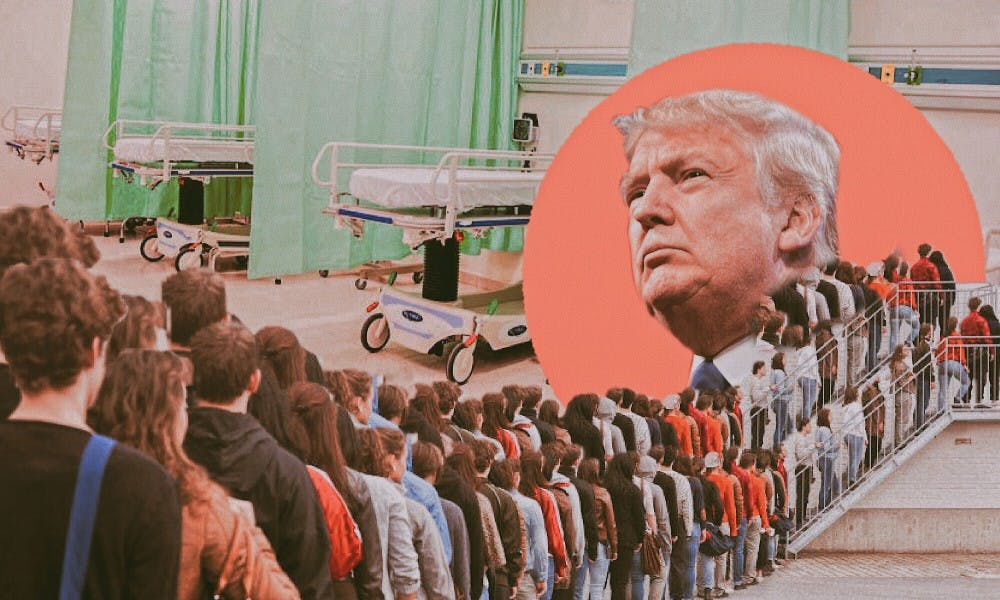
On Oct. 10, the Department of Homeland Security issued a statement outlining its plan to expand the definition of public charge. In the United States, a "public charge" is a person whom the government sees as too dependent on welfare, and is thus subject to having their green card or visa application denied.
Though public charge has been a DHS policy for decades, the previous rules were written to stave off extreme cases of government dependence that could potentially drain the U.S. economy. Because of this, only a handful of immigrants in the United States have been deemed a public charge. But this new proposed rule would mean that legal immigrants using Medicaid, the Supplemental Nutrition Assistance Program (previously known as the Food Stamp Program), Medicare Part D (which allows the elderly to get subsidized prescriptions), or Section 8 Housing assistance would also be subject to the public charge label by the federal government.
The Trump administration branded this policy as an economic necessity: the DHS press release of the policy was followed by commentary from Secretary Kristjen Nielsen, who attested that the new rule was needed to “protect finite resources by ensuring that [legal immigrants] are not likely to become burdens on American taxpayers.”
Yet it’s becoming increasingly evident that this policy will offer little to no benefit to the American economy. As many as 1 million immigrants are anticipated to withdraw from Medicaid when the policy is implemented. SNAP, Medicare Part D, and Section 8 Housing will also have their fair share of withdrawals. And one of the most jarring implications of this policy is that immigrant families will be forced to pull their children out of programs like SNAP and CHIP. In the short term, it may seem that such a high volume of people leaving these welfare programs would add a surplus to the government budget, but these societal costs will not just disappear. They will simply be incurred elsewhere.
For example, with 1 million withdrawals from Medicaid, primary care visits from these immigrant families are bound to plummet. And fewer people on SNAP and Medicare Part D means that fewer people will have access to nutritious food and prescription medication. A shortage in preventive health practices will proliferate emergency room visits and specialty health services when costs do arise. Because a 1986 federal law requires emergency services to treat all people suffering from health emergencies regardless of their ability of pay, hospitals will be forced to alleviate the costs of increased uninsured visits by charging insured patients more (leading to higher insurance premiums). In addition, if uncompensated costs are too high for hospitals to operate, the federal government will alleviate the financial burdens to hospitals, as they have done in the past, using taxpayer dollars to balance hospitals' budgets.

And, contrary to the narrative the White House has pushed, most legal immigrants already have to go through comprehensive background checks in order to enter the United States legally. Their job prospects, potential benefit to the U.S. economy, and risk of becoming dependent on welfare are all already examined before they are allowed to enter the country. Therefore, those immigrants who are on these government assistance programs are much more likely to genuinely need them in order to transition out of poverty. SNAP, Medicaid, or public housing would give these immigrants the opportunity to save money over time to escape poverty. Pulling this rug out from under them would set them in a “poverty trap,” where the mounting costs of basic necessities prevent families from ever leaving poverty.
The proposed change to public charge is clearly marred by logistical issues, but what is worrisome is that the Trump White House has access to the best economists and policy analysts in the nation. There is no doubt that these concerns would have been brought up before the DHS announced its plan to the implement the change to public charge. So if the White House knew that expanding public charge would not actually have the economic benefits it claimed it would, why did they expand public charge in the first place?
It ties back to President Trump’s history with demonizing immigrants for political brownie points. His campaign announcement itself gained notoriety when he generalized Mexican immigrants as drug traffickers and rapists. And he only continued from there, promising a Muslim ban, as well as much stricter regulations on the requirements to enter the country. It’s rhetoric like this that has been used by the GOP for generations to mobilize its more conservative voters (i.e Reagan’s War on Drugs or Bush Sr.’s Willie Horton fiasco). And it’s rhetoric like this that appealed to a 2016 voter base fearful of the influx of immigrants speaking languages and ascribing to cultures different from their own.
With midterms fast-approaching and the success of the Trump presidency dependent on a politically congruent Congress, it seems the president was in need of something to excite his supporters. Announcing this public charge rule just four weeks before the midterms is sure to rile up that same base that also resonated with then-candidate Trump’s many other anti-immigration proposals. The President has shown, once again, that he’s willing to do whatever it takes (even if it means putting the well-being of more than a million immigrants on the line) to get what he wants.

SIREESH RAMESH is a College freshman from Alpharetta, Ga. His email address is sireeshr@sas.upenn.edu.
The Daily Pennsylvanian is an independent, student-run newspaper. Please consider making a donation to support the coverage that shapes the University. Your generosity ensures a future of strong journalism at Penn.
Donate






